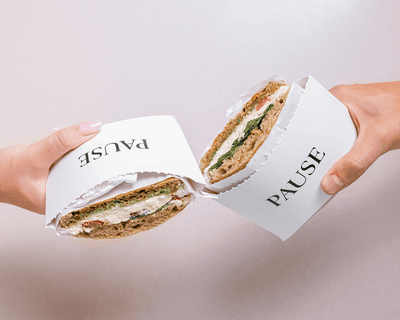Gorgonzola Cheese: A Creamy Classic Worth Savoring
Gorgonzola. Just saying the name makes your mouth water a little, doesn’t it?
This iconic Italian blue cheese is a true culinary treasure ,creamy, tangy, and bursting with character. Whether you’ve tried it before or are just curious about that mysterious marbled cheese at the deli, you’re in for a treat. Gorgonzola cheese is a piece of Italy’s rich gastronomic heritage ,and yes, it totally deserves a spot on your cheeseboard.
In this guide, we’ll explore everything you need to know about Gorgonzola ,its fascinating history, how to use it in everyday meals, the difference between Dolce and Piccante, and even how to store it like a pro.
What is Gorgonzola Cheese?
Gorgonzola is a veined blue cheese made from cow’s milk, produced in northern Italy. It's one of the world’s oldest blue-veined cheeses and comes with a bold flavor that can range from creamy and mild to sharp and spicy ,depending on its age and variety.
The Ancient Story Behind Gorgonzola
This cheese has been around for over a thousand years, believed to have originated in the town of Gorgonzola near Milan around 879 AD. It was supposedly born out of a happy accident when a distracted cheesemaker left fresh curds in a warm room overnight. When he returned, he tried to salvage the batch by mixing in new curds ,and lo and behold, a blue-veined beauty was born.
Why Gorgonzola Has a Protected Status (DOP)
Ever seen "DOP" on a cheese label? That stands for Denominazione di Origine Protetta ,a protected designation of origin. It ensures your cheese is the real deal, made in specific regions (Lombardy and Piedmont) and using traditional methods. If it’s not from this area, it can’t legally be called Gorgonzola DOP. This protection maintains its quality, heritage, and authenticity.
Dolce vs Piccante: What's the Difference?
This is where things get interesting ,Gorgonzola comes in two main styles:
-
Gorgonzola Dolce (Sweet): Creamy, buttery, mild with just a hint of blue. It melts like a dream and is perfect for those just dipping their toes into blue cheese.
-
Gorgonzola Piccante (Spicy): Older, firmer, with a punchier, sharper flavor and more intense blue veining.
Think of Dolce as a warm hug, and Piccante as an unexpected high-five from a bold Italian aunt.
Taste Profile: What Does Gorgonzola Really Taste Like?
If you’ve never tried it, imagine a combination of cream cheese and Roquefort, but with more personality. Gorgonzola Dolce is soft, luscious, with earthy undertones and just a tickle of that signature blue funk. Piccante, on the other hand, is more crumbly and brings heat and spice to the party.
Creating Gorgonzola is a bit like making cheese and art at the same time. The milk is first pasteurized and inoculated with Penicillium roqueforti ,the friendly mold that creates the iconic blue veins. After aging for a few weeks, it's pierced with needles to allow air in, which helps the mold flourish.
The result? A beautiful marbled interior that’s as striking as it is delicious.
Serving Ideas for Gorgonzola
Want to impress your guests? Spread Gorgonzola Dolce on warm crostini, drizzle with honey or fig jam, and top with crushed walnuts. It's like a little Italian vacation for your taste buds ,no passport needed.
One of the easiest (and most indulgent) dinners you’ll ever make: Cook pasta, stir in a bit of cream, add Gorgonzola Dolce, and toss until it melts. Add cracked pepper, maybe some spinach or pancetta, and voilà ,you’re a gourmet chef.
If salads feel boring, Gorgonzola can be your flavor hero. Crumble some over arugula with sliced pear, candied pecans, and balsamic glaze. It adds just the right mix of tang and richness to make greens exciting again.
How to Store Gorgonzola Cheese Correctly
Here’s the thing: blue cheese is alive, so treat it kindly.
-
Wrap it loosely in parchment or wax paper, then place in a sealed container in your fridge.
-
Keep it in the vegetable drawer where humidity is higher.
-
Don’t suffocate it with plastic wrap ,it needs to breathe.
Signs Your Gorgonzola Has Gone Bad
Not all molds are good molds.
Look out for:
-
Ammonia smell (trust your nose,
-
it shouldn't be that pungent).
-
Pink, red, or black spots (these are unwanted molds).
-
Texture that’s slimy or dry as a bone.
When in doubt, toss it out.
Gorgonzola Dolce DOP: Where to Find the Real Deal
Now that you're craving it, where can you get the best Gorgonzola Dolce DOP?
Maison Morand Paris offers a creamy, sweet, and 100% authentic Gorgonzola Dolce DOP ,direct from Italy. It’s everything you want: melt-in-your-mouth texture, delicate blue marbling, and that unmistakable nutty-milky flavor.
Why You Should Add Gorgonzola to Your Cheese Rotation
Let’s be honest ,cheddar and mozzarella are great, but Gorgonzola brings drama to the table. It’s the cheese equivalent of that friend who always brings the best stories to dinner. And with so many ways to enjoy it, from elegant appetizers to soul-warming pasta ,it’s the creamy upgrade your fridge has been waiting for.
There’s something magical about Gorgonzola ,the way it balances decadence with a bold spirit, tradition with versatility. Whether you’re entertaining friends or just treating yourself, it’s a cheese that invites you to savor every bite. So go ahead, try it, melt it, crumble it, and fall in love with it.
And if you’re going to indulge, why not make it the best?









